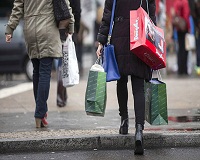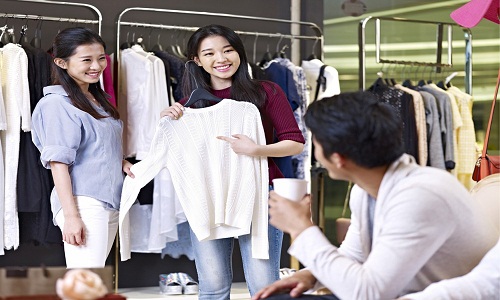 With growing economic prosperity, Asean consumers are spending more on fashion and lifestyle items. A Euromonitor International survey reveals, the region’s consumer expenditure on clothing and footwear amounted to $ 51.2 billion in 2017. Over the next five years, it is expected to grow on an average 7.3 per cent annually to reach $ 72.7 billion in 2022. According to HKTDC’s ASEAN Middle-income Consumer Survey, more than half respondents in Jakarta, Kuala Lumpur, and Bangkok are expected to spend more on fashion items in next two years. The distribution of fashion spending was: business attire (28 per cent), casual wear (26 per cent), shoes (22 per cent), accessories (12 per cent), travel goods and handbags (8 per cent), and spectacles (4 per cent).
With growing economic prosperity, Asean consumers are spending more on fashion and lifestyle items. A Euromonitor International survey reveals, the region’s consumer expenditure on clothing and footwear amounted to $ 51.2 billion in 2017. Over the next five years, it is expected to grow on an average 7.3 per cent annually to reach $ 72.7 billion in 2022. According to HKTDC’s ASEAN Middle-income Consumer Survey, more than half respondents in Jakarta, Kuala Lumpur, and Bangkok are expected to spend more on fashion items in next two years. The distribution of fashion spending was: business attire (28 per cent), casual wear (26 per cent), shoes (22 per cent), accessories (12 per cent), travel goods and handbags (8 per cent), and spectacles (4 per cent).
Fashion distribution channels
Concept stores, department stores and multi-brand stores are dominant distribution channels for fashion in Asean. Aside from bricks-and-mortar retailers, e-commerce has quickly become an independent force in the fashion industry as well.
bricks-and-mortar retailers, e-commerce has quickly become an independent force in the fashion industry as well.
Concept stores:
Concept stores sell well-curated products matching that store’s special theme. They constantly seek unique items to add corresponding accessory labels to their product offerings.
Department Stores:
Department stores are an important fashion distribution channel in Malaysia. Major department store chains, such as Parkson and Metrojaya, continue to upgrade their product portfolios to include a wider selection of brands attractive to middle- and high-income consumers. In Thailand, Central Group has Central Department Store, Robinson Department Store and Zen, as well as managing Marks & Spencer and MUJI. The Mall Group operates The Mall department stores, Siam Paragon, The Emporium, and The EmQuartier.
Online Platforms
With just three per cent, e-commerce penetration in the Asean countries it is still only 3 per cent of total retail sales. The Asean fashion ecommerce market includes classified sites (Mudah and OLX), C2C (Tarad, Tokopedia, Bukalapak, Shopee), B2C (Lazada, Zalora, MatahariMall) and brands’ own sites (H&M and Adidas). Retailers like Central Group and MAP Group, have also embraced e-tailing by creating their own online platforms.
Making inroads into the market
Luxury groups such as Louis Vuitton, Christian Dior, Chanel, Prada, and many more, usually enter the Asean market by opening self-owned flagship stores to ensure a total control of brand image. Sportswear brands, such as Nike or Adidas, mostly expand by means of franchising. Fast fashion brands, such as H&M, Zara, and Uniqlo open branded retail shops in major cities across Asean.
Upcoming fashion designers can also approach department stores with their portfolio or propose a joint promotion event, such as a trunk show. Large brands can choose to participate in large-scale iconic fashion shows in the region, such as the Bangkok International Fashion Fair and Kuala Lumpur Fashion Week. Smaller brands can showcase their collections in private fashion events organised by fashionista and public relations consultants. Partnering with a retailer to host a trunk show is another alternative.
Social media has become an essential tool for marketing, public relations, and customer service. Brands need to make sure that their social media content is timely, engaging, and relevant to their target market. They can also hire Influencers to gain immediate access to the right customers.












